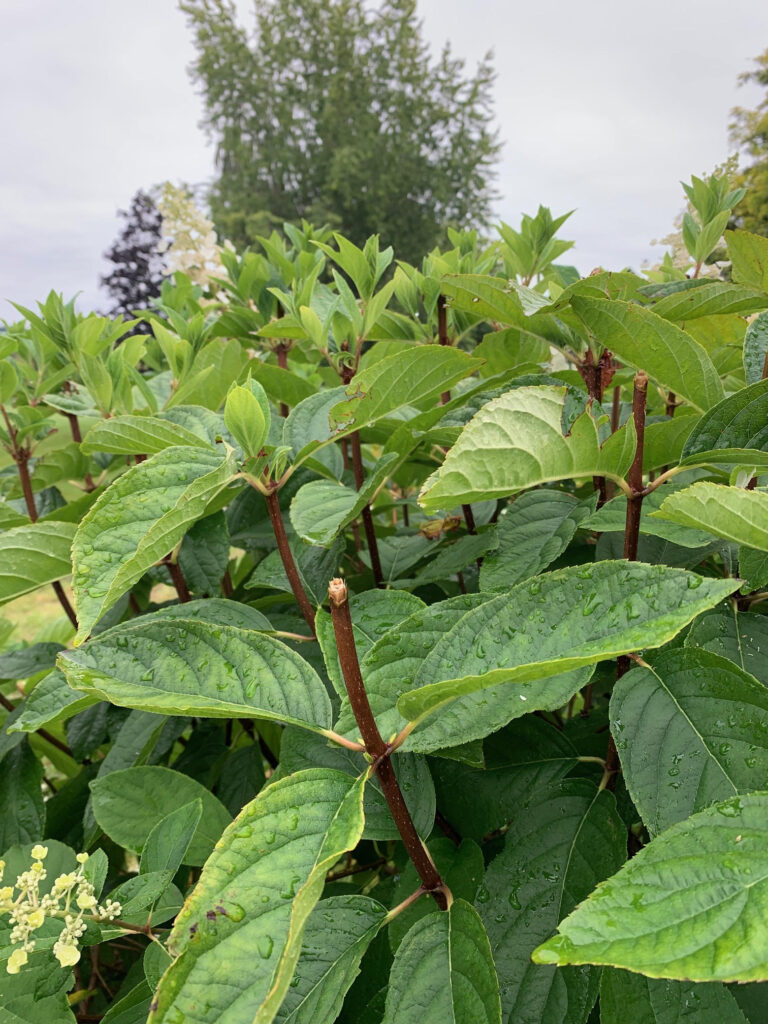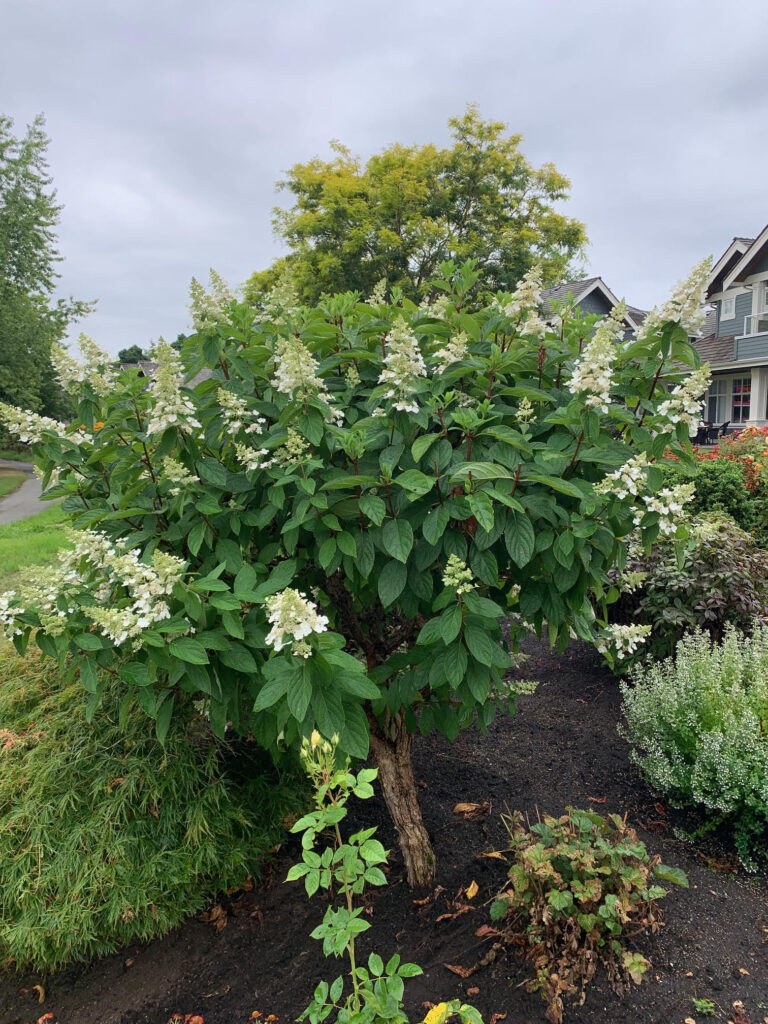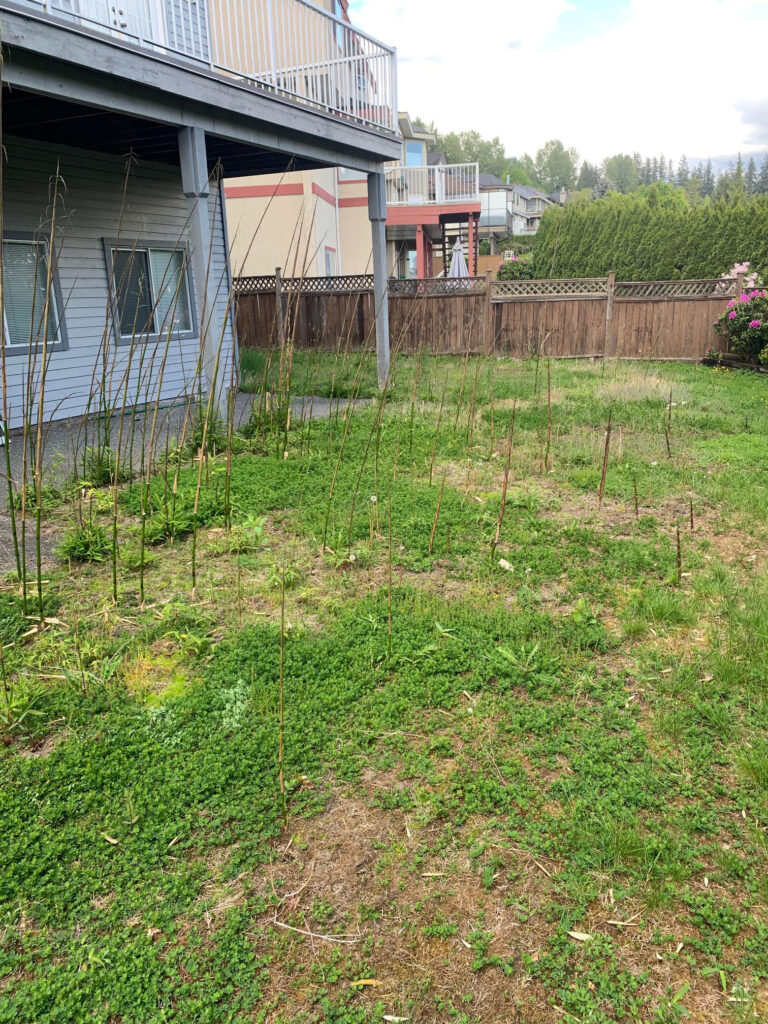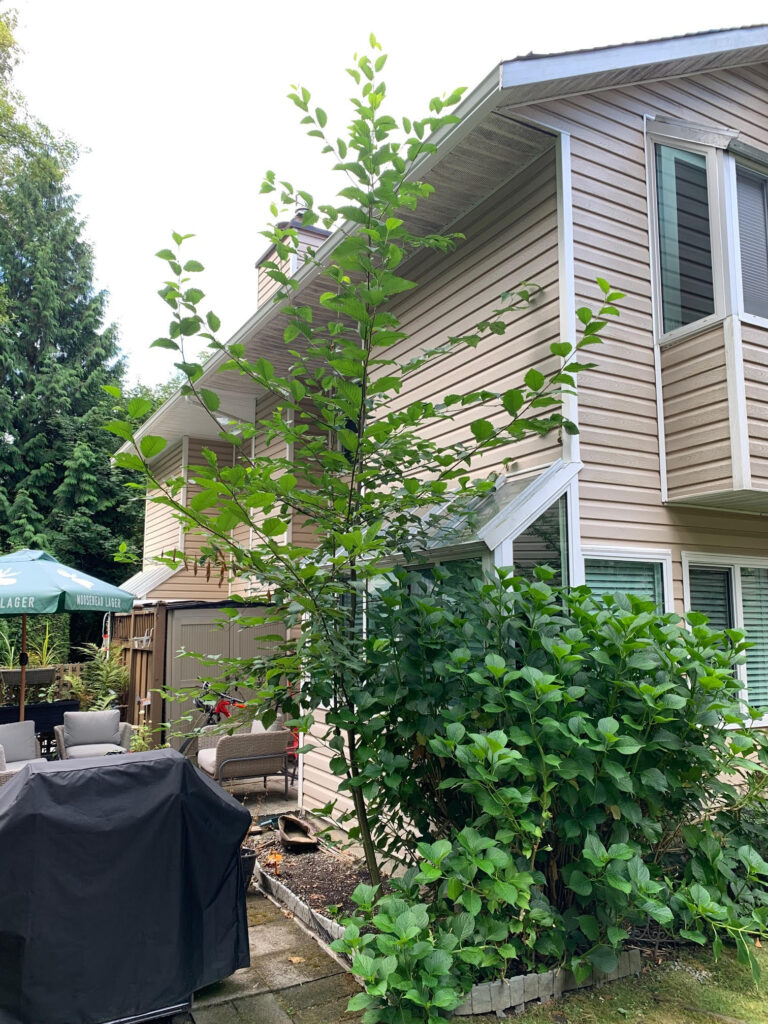Watch it!
Last week we covered mistimed pruning on a Hydrangea paniculata and this week we cover the same topic but with a different shrub. Now, I’ve written about Callicarpa pruning accidents before; but I have to do it again because last week I witnessed a landscaper taking liberties with the shrubs.
It started very innocently: mid-season pruning is concerned with keeping shrubs in decent shape. Roses and dogwood shrubs definitely looked out of shape by July. With limited space in multi-family complexes, shrubs are often sheared into submission. And many can take the abuse because they push out new growth right away.
But you can’t treat every shrub the same way. Remember the Hydrangea paniculata from last week?
Beautyberry
If you move very fast it’s easy to move from a dogwood shrub to a Callicarpa and start shearing. Luckily I noticed the tiny flower clusters before pruning. So I did prune the edges of the shrub because the flowert clusters aren’t terminal. You see them one or two nodes down which allows you to reduce the shrub size slightly without losing any flowers.
The landscaper I witnessed shaved off a lot of flowers.
The common name beautyberry is a tip off: we’re not really worried about flower shows because the flowers turn into beautiful purple berry clusters. And those clusters persist into winter when all of the foliage is gone. That’s when they really pop: purple berries really stand out on an otherwise bare shrub. Personally, I love the look, so I try not to shave off any flowers in mid-season.
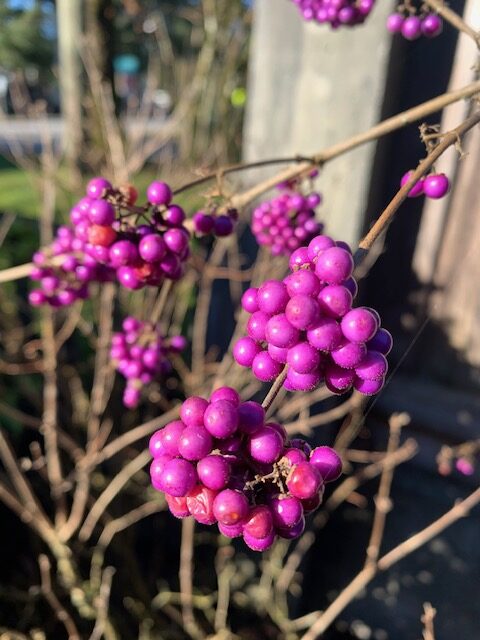
Conclusion
Get to know your shrubs and you’ll be rewarded, especially if you time your pruning correctly. Clipping Callicarpa into shape in mid-season isn’t worth sacrificing winter berries for. I love the way the berries pop in winter on bare shrubs.
For more blogs, visit www.westcoastlandscapepro.com




